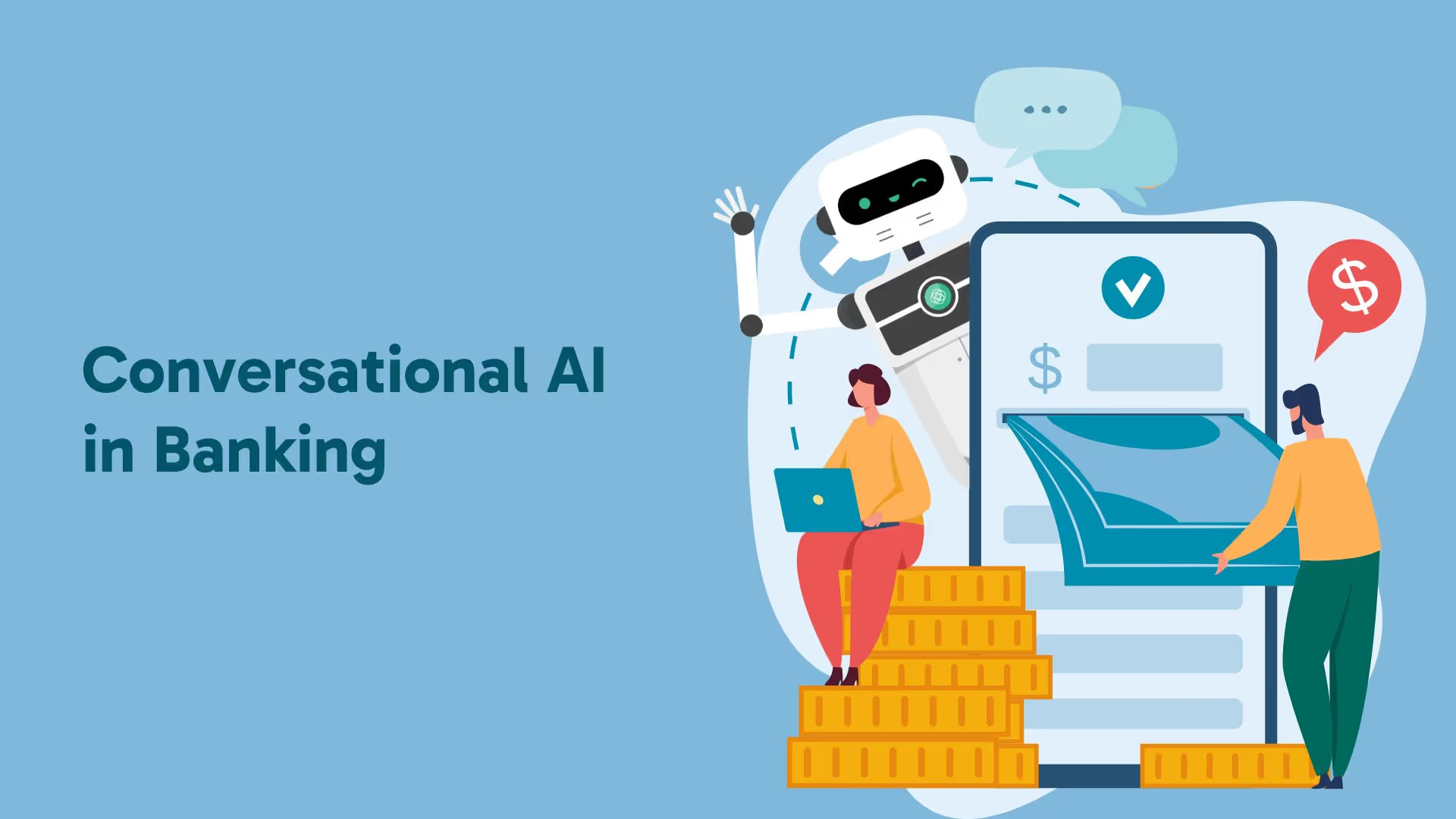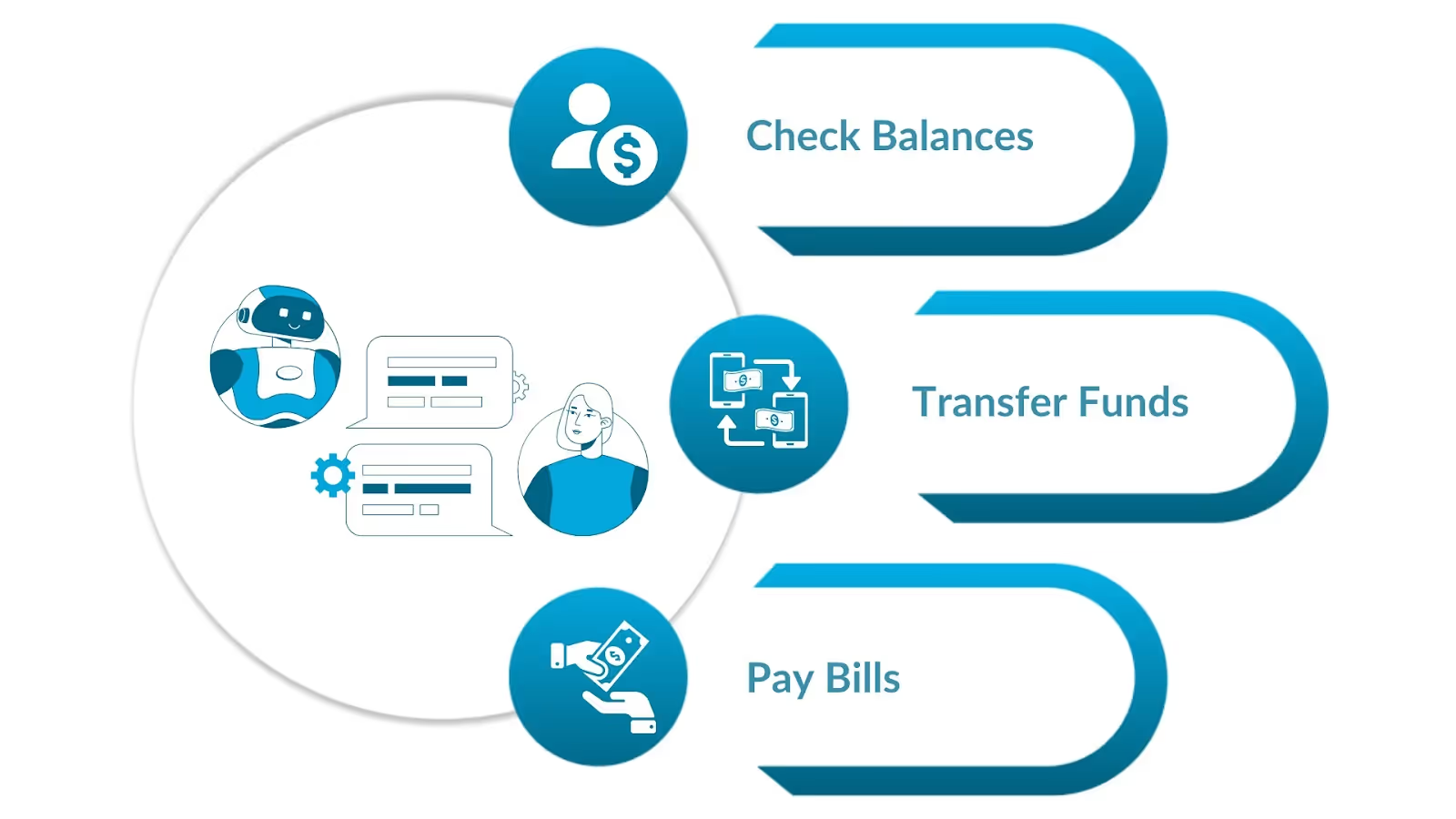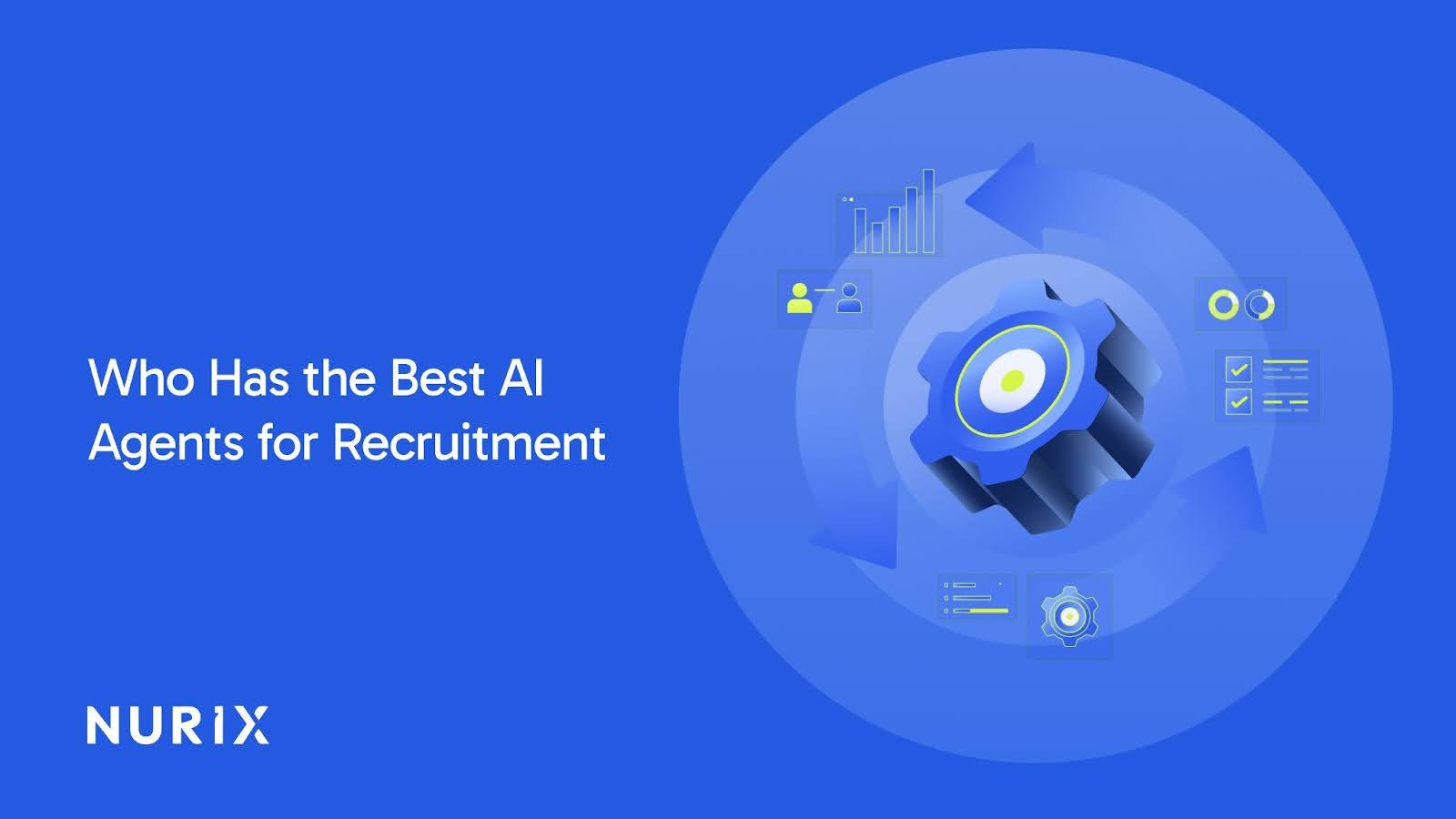Use Cases and Benefits of Conversational AI in Banking

Ever wondered how banks can offer 24/7 customer service? The answer is conversational AI for banks. In today's digital world, conversational AI is changing the way financial institutions talk to their customers, offering personal, efficient, and 24/7 service. This article looks at the many use cases and benefits of conversational AI for banks and how it's reshaping the banking landscape.
What is Conversational AI in Banking?
Conversational AI in banking is a significant technology that allows banks to simulate human-like conversations. By automating human-like conversations, banks can offer real-time support, manage customer queries, and process transactions effectively. It can also provide basic financial advice based on pre-programmed responses. It makes banking services more accessible, efficient, and personal. It also reduces the need for human intervention in routine tasks and helps banks stay relevant in a fast-changing digital world.
Why Conversational AI is Important in Banking

Before diving into the use cases, it's important to understand what conversational AI in banking entails. Conversational AI is crucial in banking for several reasons:
- Enhanced Customer Experience: Provides instant responses and personalized services, ensuring customers get the help they need when they need it. This leads to higher customer satisfaction and loyalty.
- Operational Efficiency: Automates routine tasks, reducing operational costs and allowing staff to focus on more complex issues. This improves overall efficiency and productivity in banking operations.
- Fraud Detection: Fraud detection can use AI to monitor transactions and detect suspicious activities in real-time. This helps in preventing fraud and ensuring the safety of customer assets.
- Compliance Management: Assists in regulatory adherence by monitoring interactions and aiding in maintaining compliance. This reduces the risk of regulatory penalties and enhances trust in the bank.
Now that we've established its importance let's delve into the key technologies driving conversational AI in banking.
Key Technologies in Conversational AI Banking
Conversational AI for banks utilizes several key technologies:
- Natural Language Processing (NLP): So the AI can understand and process human language correctly, making interactions smoother and more user-friendly.
- Machine Learning (ML): Allows the AI to learn from data, adapting and improving its responses over time. This results in more accurate and effective customer interactions.
- Chatbots and Virtual Assistants: These provide real-time support, handling a variety of tasks such as answering inquiries, processing transactions, and offering basic financial advice.
- Speech Recognition: Converts spoken language into text, enabling voice-based interactions with the AI. This makes banking services more accessible, especially for those who prefer speaking over typing.
These technologies collectively enhance the capabilities of conversational AI in the banking sector, making interactions more seamless and efficient.
With a grasp on the technologies, let's explore how these are applied in real-world banking scenarios.
Customer-Centric Use Cases of Conversational AI in Banking
Use Case 1: Revolutionizing Customer Support
- Account Balance Inquiries: Customers can check their account balances without human intervention. Time and workload for human agents are reduced.
- Password Resets: AI can guide customers through a secure password reset process so their accounts are protected and hassle-free.
- Product and Service Info: Customers get instant info on banking products and services so they can decide without waiting for a human agent.
Example: Bank of America's Erica has handled millions of customer interactions, providing personalized financial guidance and support. Erica can do many tasks, so customer satisfaction and engagement have increased. [Source]
Use Case 2: Efficient Call Transfers
Call centers struggle with high volumes and long wait times. AI for call transfer in banking can route calls to the right department so these issues are reduced. Customers get connected to the right agent faster, and call center operations are optimized.
Example: ICICI Bank uses conversational AI (NLP) to route calls faster and improve customer satisfaction. [Source]
Use Case 3: Securing Transactions
Fraud is a big concern for banks. Proactive conversational AI for retail banking can monitor transactions in real time, detect suspicious activity, and alert customers. By using machine learning algorithms, AI can detect patterns of potential fraud so customer's assets are protected.
Example: HSBC's Amy chatbot helps in fraud detection by monitoring transactions and alerting customers of any suspicious activity. This has helped in preventing fraud and increase customer trust. [Source]
Use Case 4: Personalized Banking
Conversational AI for banks provides personalized financial guidance by analyzing customer's financial history and transactions. This personalized guidance increases engagement and loyalty by giving customers specific recommendations to save, invest, and budget based on their financial situation.
Example: Capital One's AI (NLP) provides personalized financial guidance by analyzing customer's spending habits and transaction history. [Source]
Use Case 5: Streamlining Loan Processes
The loan and mortgage application process is time-consuming and complex. Conversational AI for banks can simplify this process by guiding customers through application forms, answering questions, and providing updates. This reduces the administrative load on bank staff and speeds up the processing time for customers, making the loan process more efficient and user-friendly.
Example: SEB, a Swedish bank, implemented a virtual assistant named Aida to streamline its loan processing and improve customer service. [Source]
Use Case 6: Simplified Account Management with Conversational AI

Account management is made simple with Conversational AI for banks. Customers can do many things through AI-powered platforms such as:
- Check Balances: Check account balances without a bank rep. Get instant access to your money.
- Transfer Funds: Transfer funds between accounts quickly and securely. AI ensures transactions are smooth and error-free.
- Pay Bills: Manage and pay bills through an AI interface. Stay on top of your finances and never miss a payment.
These have a user-friendly interface so customers can manage their finances anywhere, anytime.
Example: Wells Fargo's AI assistant which helps customers manage their accounts by providing access to balance checks, transfers, and bill payments. [Source]
Use Case 7: Seamless Customer Onboarding
Onboarding is key to retaining new customers. Conversational AI for banks helps new customers through documentation and initial steps so onboarding is seamless. AI systems guide customers through the paperwork and process, so onboarding is easy and painless.
Use Case 8: Boosting Marketing Efforts
AI-powered chatbots can engage customers with offers and promotions based on transaction history and preferences. This targeted marketing increases conversions and customer retention. With Conversational AI for banks, banks can deliver more relevant and compelling marketing to their customers.
Use Case 9: Managing High Traffic
During peak traffic, conversational AI for banks uses sentiment analysis and intent detection to prioritize and manage customer queries. Urgent issues are addressed quickly while service standards are maintained for all customers.
Use Case 10: Ensuring Compliance
Compliance is made easy with Conversational AI for banks. AI systems monitor interactions to ensure they are compliant so customers can trust and be secure. Banks can focus on core business.
Example: BNP Paribas uses conversational AI to monitor transactions and customer interactions for compliance. [Source]
Use Case 11: Competitive Insights
Conversational AI for banks collects data from multiple touchpoints to give insights into customer behavior and the competitive landscape. This data helps banks make informed decisions and stay ahead.
Example: JPMorgan Chase uses AI to analyze customer data and market trends. [Source]
The Key Benefits of Conversational AI in Banking
The adoption of conversational AI for banks offers numerous benefits, both for financial institutions and their customers. Some of the key advantages include:
- Better Customer Experience: Quick, accurate, and personalized responses. Customers love the convenience and efficiency of AI chat.
- More Efficiency: Automating routine tasks so bank staff can focus on more complex work. Better utilization and operational productivity.
- Cost Savings: No need for large call center teams and minimizing human error costs. AI can handle high volumes of queries without extra staff.
- Enhanced Security: Detecting and responding to fraud in real time. AI monitors transactions 24/7 to keep customer assets safe.
- Data-Driven Insights: Valuable insights into customer behavior to refine service. Banks can use this data to tailor their services and improve customer satisfaction.
- 24/7 Support: AI provides 24/7 customer support so customers can get help at any time, not just during business hours.
- Scalability: AI can scale to handle increasing volumes of customer interactions without extra cost. Easy to manage peak times and growth.
- Multilingual Support: AI can support multiple languages so banking is available to a wider audience and improves customer satisfaction for non-English speakers.
While the benefits are substantial, there are several challenges that banks must navigate when implementing conversational AI.
Challenges in Implementing Conversational AI in Banking
Despite its numerous benefits, implementing Conversational AI for banks comes with challenges. These include:
- Integration with Existing Systems: Integrating with existing banking infrastructure can be tough and expensive. Banks need to ensure that AI works with what they already have.
- Data Privacy: Protecting customer trust by keeping data private is key. Banks need to implement strong security.
- Continuous Learning and Adaptation: Keeping the AI up to date with changing regulations and customer needs requires ongoing work. Banks need to invest in continuous training and updates for their AI.
- Cost and Re-Allocation: Initial setup costs and ongoing maintenance and updates can be significant. Banks need to plan and reallocate resources to support AI.
Conclusion
Conversational AI is changing the banking landscape by improving customer service, simplifying operations, and keeping it secure. By using conversational AI for banks, they can provide personalized, efficient, and secure experiences to their customers. The possibilities of conversational AI in banking are endless, and adopting these will help financial institutions stay ahead and deliver more value.
Ready to transform your banking? Nurix AI offers customized solutions to revolutionize customer interactions, boost engagement, and drive business growth. Partner with Nurix AI to automate repetitive tasks, support customers in real-time, and integrate with your existing systems. Upgrade your customer experience today with Nurix AI!









